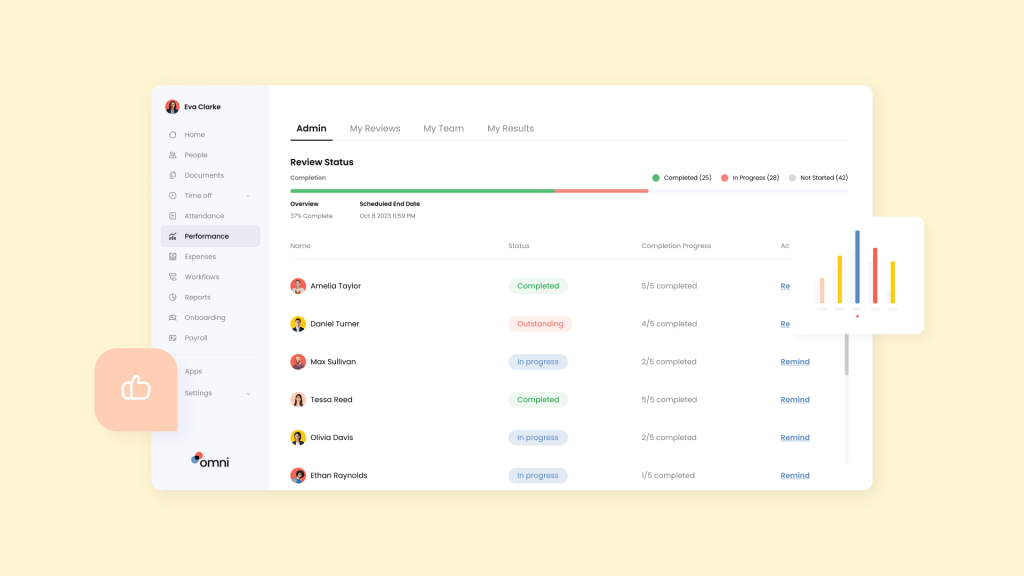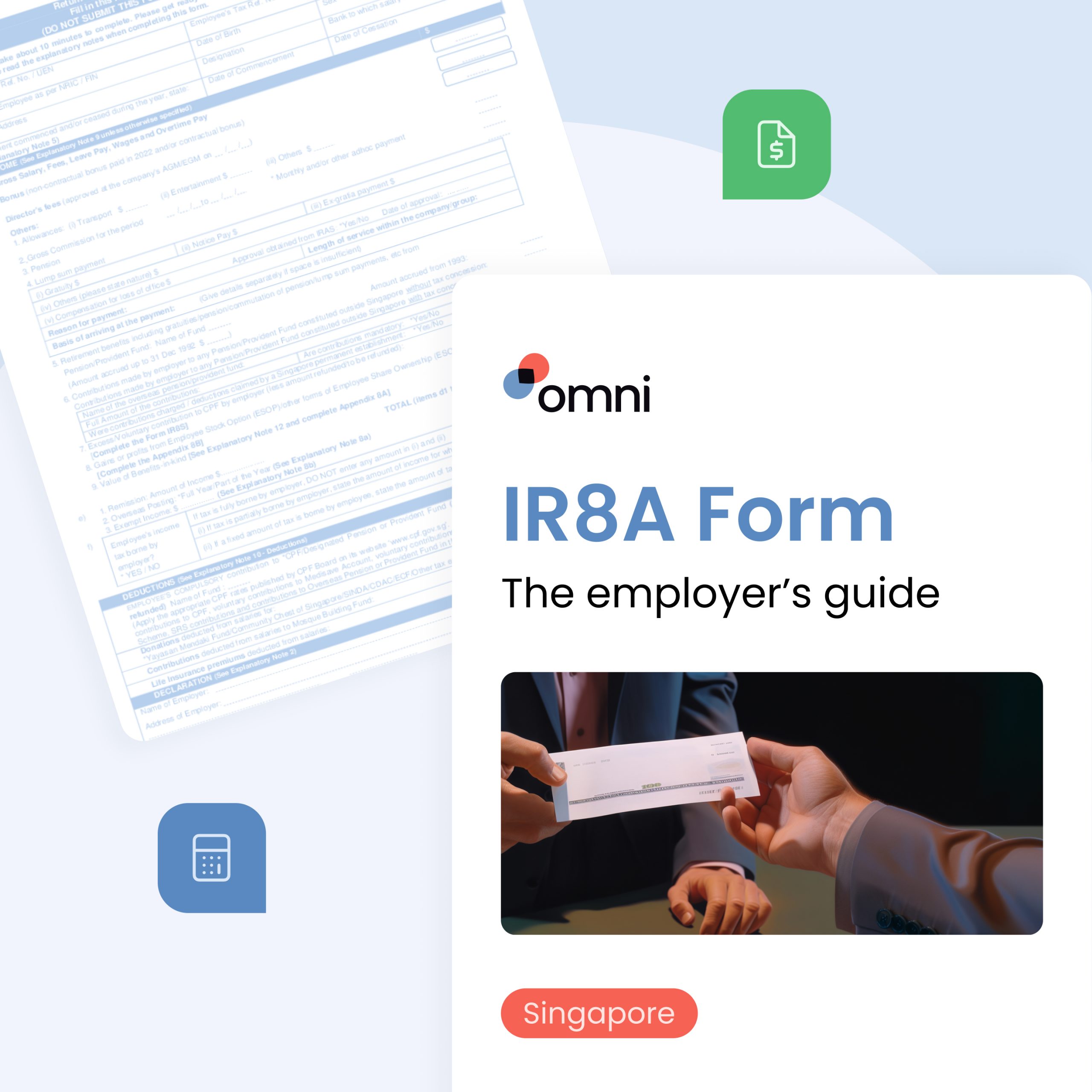Research indicates that 98% of employees feel disengaged from work if they receive little to no feedback. While receiving employer feedback boosts morale, self-evaluation can be tricky. How can you objectively assess your performance without exaggeration or downplaying?
This is particularly difficult when evaluating team achievements or addressing your own shortcomings, especially if influenced by managerial oversights.
All these hurdles are common when considering how to write a mid-year review for yourself and others. Let’s dive into the details, including what to include in your reviews and tips to craft a compelling narrative that shows your commitment to improvement within the organization.
What is a mid-year review?
A mid-year performance review is a scheduled check-in between an employer and an employee, typically held around the halfway mark of the year. It’s a rather relaxed, one-on-one conversation to discuss the employee’s progress, performance, and areas of improvement. These reviews allow managers to suggest strategy changes and address concerns before the detailed year-end review.
While usually informal, some employers may prefer a more structured evaluation. The review assesses progress toward current goals and may establish new goals if necessary. Employees are encouraged to share their perspectives and any obstacles they’ve encountered to receive guidance for success.
Relevant reads:
Why should employees write a mid-year review?
Before discussing how to write a mid-year review for yourself, let’s briefly explore its benefits for both employees and the organization.
For employees
- Gain self-awareness: reflecting on your performance halfway through the year helps focus on your strengths, weaknesses, and areas for improvement. It allows you to step back, analyze progress and plan for growth.
- Proactively address concerns: identifying challenges early enables you to take proactive stress to address them before they escalate. Tackling issues promptly can prevent them from becoming larger problems.
- Demonstrate initiative and drive your development: conducting a mid-year review shows your commitment to continuous improvement and excellence in your role. Taking initiative can make a positive impact on supervisors and colleagues.
- Celebrate your wins: recognizing achievements from the first half of the year boosts confidence and energizes you for upcoming challenges, inspiring you to strive for excellence.
- Set goals for the remainder of the year: use the mid-year review to set clear, actionable goals for the second half of the year. This provides direction and focus, maximizing your efforts for the rest of the year.
For organizations- Gather valuable information: mid-year reviews provide valuable insights into employee performance, progress, and challenges. This information aids in decision-making regarding HR budget, training initiatives, and strategic planning.
- Foster open communication: encouraging employees to share feedback creates a workplace culture where they feel valued, leading to higher engagement levels.
- Align expectations: mid-year reviews realign employee goals and expectations, ensuring everyone is working towards common goals.
- Improve employee engagement: involving employees in the review process demonstrates that their contributions are recognized. This appreciation and involvement boost employee engagement and commitment.
- Course correct: Mid-year reviews help organizations to address employee concerns promptly and realign efforts to achieve organizational goals.
Take your performance management to the next level!
Components to Include in a Mid-Year Review

To understand how to write a mid-year review, you need to include the right sections that cover your achievements, contributions, and areas of improvement.
Key achievements
Acknowledge significant achievements, such as meeting project milestones or exceeding sales targets, with concrete data or metrics wherever possible.
For example, “I successfully led a project team that implemented a new CRM system, resulting in a 20% increase in sales leads.”
Quantify your impact
Use specific, measurable data to back up your achievements. For instance, “I implemented a new customer feedback system that resulted in a 30% increase in customer satisfaction scores compared to previous year.”
Highlight contributions to team and company goals
Demonstrate how your work supports broader organizational goals, citing specific examples of projects where you contributed to these objectives and collaborated with team members.
Identify core strengths
Showcase your leadership abilities, problem-solving skills, and adaptability to new technologies. Highlight instances where you’ve taken initiative, led projects, and positively influenced team members.
Focus on specific development goals
Mention the goals you set at the beginning of the year and assess your progress. Discuss strategies to achieve these goals, especially if you’re slightly behind target.
For instance, as a sales representative who set a goal to achieve a 15% increase in monthly sales volume compared to last year. However, at the mid-year review, you found that you achieved a 12% increase, slightly below target. The mid-year review can help identify strategies to boost sales performance in the remaining months by focusing on areas of improvement and building on successful strategies.
Outline areas of improvement
Reflect on skills that could be developed to improve your performance, such as technical skills, communication skills, and conflict resolution.
By including these sections in your mid-year review, you can provide a comprehensive overview of your performance and demonstrate your commitment to growth and development within the organization.
If you’re unsure where to start,
Tips on How To Write a Mid-Year Review
In the next section in our guide on how to write a mid-year review, we’ll explore the essential tips for writing a review, whether for yourself or other team members.
How to write a mid-year review for yourself
If you are writing a mid-year for yourself, here’s what you need to focus on:
Review and reflect on past performance reviews
Begin by revisiting previous performance evaluations or feedback, including written assessments and meeting notes. Look for key points regarding strengths, areas for improvement, accomplishments, and feedback. Also, review your goals and their progress.
Based on this, ask yourself these questions to conduct your self-evaluations better:
- What specific actions or behaviors were praised by my manager or colleagues?
- Are there any recurring themes or patterns in the feedback I’ve received?
- How have I addressed previous areas for improvement since the last review?
- What insights have I gained about my strengths and weaknesses?
- Have there been any unexpected challenges or successes that I can learn from?
- How have I grown professionally since my last review?
Omni Tip on how to write a mid year review:
Create a running doc or list that you update weekly or monthly with projects you’ve worked on and wins you’ve had throughout the year. This makes it easier to recall when it comes time to review and reflect on your performance!
Use the SMART framework
Setting SMART goals is another helpful tip on how to write a mid-year review. Based on past performance evaluations, you’ll have new goals. Break these larger objectives into smaller, actionable tasks.
For example, instead of saying “I will try to improve my sales performance in the next few months,” you can say, “I will increase my monthly sales by 15% compared to the previous quarter by the end of the year. To achieve this, I will attend at least two additional monthly networking events, allocate one hour daily to follow up with potential clients, and enroll in a sales training course by the end of Q3.”
This approach ensures your goals are specific, measurable, and tied to a timeline, making it easier to track progress and make adjustments.
Be honest and objective
It is important to approach how to write a mid-year review with honesty and objectivity, acknowledging both successes and setbacks. Avoid being overly critical or lenient.
For example, if you’ve made progress in meeting deadlines but faced challenges on a specific project, address it directly:
“During the XYZ project, miscommunication led to rework and missed deadlines. I take full responsibility and plan to improve my communication by scheduling regular check-ins and actively listening to team input.”
This demonstrates your commitment to improvement and responsibility for your actions.
Include feedback from others
Feedback from others can provide valuable insights on your performance from different perspectives, shaping how to write a mid-year review. Your supervisor provides insights into their expectations, your strengths, and areas for improvement.
Peers offer a unique perspective on how to write a mid-year review for yourself, noting strengths and areas to develop that your supervisor may not have observed.
Additionally, feedback from external sources like mentors can provide valuable guidance and constructive criticism to support your growth.
Structure review with clarity
Your mid-year review should provide clarity on accomplishments, challenges, goals, and development areas, each with subheadings for further detail. Along with that, keep in mind the following:
- Use concise and objective language and avoid unnecessary verbosity
- Focus on solutions and proactive measures to address challenges instead of dwelling solely on problems
- Maintain a positive and constructive tone throughout the review
- Structure your review document logically and provide evidence to support your claims
Reframe shortcomings as opportunities for growth
Managers don’t expect perfection; they value individuals with a growth mindset who see shortcomings as opportunities. Identify root causes behind your shortcomings and use them to improve.
For example, if you missed project deadlines, explain how you’ll implement a more structured planning process for future improvement.
For Others
If you want to learn how to write a mid-year review for another individual or team, focus on the following areas:
Gather data and feedback
Collect quantitative and qualitative data from various sources to assess outcomes and workplace commitment. Use performance evaluations, project reports, and feedback from colleagues and supervisors. Consider conducting 1-on-1 meetings or surveys to gather input from team members, peers, or stakeholders.
Provide clear and unbiased feedback
Review progress toward the goals and expectations set at the beginning of the year or in the previous review. Use specific examples, observations, and outcomes to provide clear and concise feedback. While giving feedback, ensure you keep any personal opinions aside and base feedback on collected information, avoiding performance appraisal bias and judgements.
Balance positive and constructive feedback
It’s vital to acknowledge all achievements, big or small, to recognize an individual’s or team’s contribution. However, a balanced evaluation includes both praise and constructive criticism. little and big wins to show the contribution made by the individual or team. To illustrate, while praising an increase in customer retention rates, suggest exploring new strategies to diversify customer outreach. Provide specific examples of successes and areas of improvement to promote balanced growth.
Rely on facts and figures over opinion
It is important that your feedback is based on facts and figures rather than assumptions or personal opinions. Support your statements with quantifiable measures wherever possible.
Here’s an example:
“In the past six months, your sales figures have consistently exceeded the department average by 15%. Your performance is particularly noteworthy considering the challenging market conditions we’ve faced. Your ability to close deals efficiently and maintain strong client relationships is reflected in our recent survey’s 95% positive customer feedback.”
While not every point can be quantified, using numbers strengthens your feedback and demonstrates thorough research.
How Omni Helps Organizations Drive Progress

Knowing how to write a mid-year review for yourself or others is crucial to assess progress. Set new goals, and identify areas for improvement.
With well-structured self-evaluation strategies, you can confidently navigate your performance review, unlocking your full potential and driving personal and organizational achievements. Omni’s customizable performance review feature allows managers to design a self-evaluation template for employee performance reviews, track employee submissions, and derive critical insights to drive business decisions all in one centralized platform.
Performance reviews don’t have to be a dreaded task, with the right framework and guidance, the exercise can become a useful tool in self-reflection and professional development.
For more resources on how to write a mid-year review for yourself and others,
Join the 83% of Omni customers who have unlocked new, actionable insights after using our performance management module, and book a free demo with our team today.


